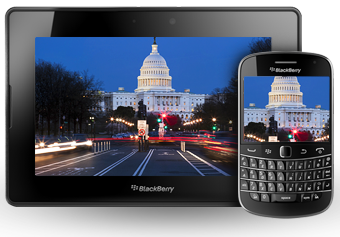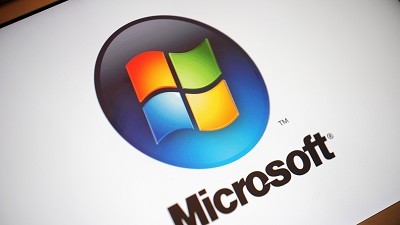 A couple weeks ago, I posted that BlackBerry® 7 OS had been approved in North America for Department of Defense use. This was great news, and apparently has now been extended to include BlackBerry® 7.1 OS devices as well. In fact, many US government organizations are responding to this certification quite positively and contacting dodsales@rim.com to take advantage of a variety of trade-up/trade-in programs.
A couple weeks ago, I posted that BlackBerry® 7 OS had been approved in North America for Department of Defense use. This was great news, and apparently has now been extended to include BlackBerry® 7.1 OS devices as well. In fact, many US government organizations are responding to this certification quite positively and contacting dodsales@rim.com to take advantage of a variety of trade-up/trade-in programs.
However, within minutes of publishing that blog post, my Research In Motion® (RIM®) colleagues began BBMing me to point out that I’m not the only story in town. Apparently there’s a bigger story than I was aware of! As important as the USDOD approval is – and despite my local pride in the achievement of my North American friends on the security, regulatory compliance, and government marketing teams – apparently, RIM staff across the pond and around the world have their own bragging rights with governments globally certifying BlackBerry 7 OS for use.
In Australia, for example, the BlackBerry 7.0 and 7.1 Operating Systems (BlackBerry 7) were successfully evaluated and approved for Government use by the Defence Signals Directorate (DSD) of the Australian Government. This certification affirms that BlackBerry 7 OS meets the Australian and New Zealand Governments’ strict security standards for a wide range of scenarios, representing the majority of day-to-day operational communications. This includes potential use in securing information classified up to and including PROTECTED (Australia) and RESTRICTED (New Zealand).
Not to be outdone, my U.K. counterparts chimed in adding that the CESG (Communications-Electronics Security Group), the National Technical Authority for Information Assurance, has also approved BlackBerry 7 for government use across the U.K., making BlackBerry the only mobile solution approved by CESG to protect material ‘Restricted’ materials.
Whether it’s U.S., U.K., or Australia, governments around the world continue to use and officially approve the BlackBerry platform. For political reasons, it’s seldom they can speak about it publically, but time and again, after significant testing and review, our solutions pass with flying colors – acknowledging key facets of the BlackBerry solution including security, manageability, and scalability.
However, leading organizations, from both government and corporate sectors must look beyond certifications and focus simply on leveraging their investment in mobile infrastructure. Ensuring their staff have the tools they need to be the most productive often means accessing newer technology like the advanced features incorporated in the newest BlackBerry 7 OS smartphones – fast web browsing, NFC interoperability, augmented reality applications, and so on.
Moreover, in light of consumerization demands, IT organizations need to appease end user demands, opening up access to BlackBerry consumer features like the MP3 player, built-in radio, and camera functionality, not to mention access to fun and entertaining apps in the BlackBerry App World™ storefront.
So whether driven by regulatory approval or the built-in benefits (both personal and organizational), organizations are increasingly moving towards BlackBerry 7 OS. These governments have clearly defined their enterprise grade device choice, providing departments and staff with a much needed benchmark. Where is your organization at in defining your ‘approved’ mobile solution…are you leading or lagging public sector?
Your peers would be as grateful as I would be to hear your comments on mobile device selection and policy. Where is your organization at in defining and controlling device selection? Do you provide approved lists? Do you depend on analogous industry certifications or do you have your own approval program? Where does Mobile Strategy stop and Mobile Device Management start? What criteria do you use to evaluate whether a device is worthy of your organization’s staff and data?
Author : Roger B. /blackberry businessblog




































